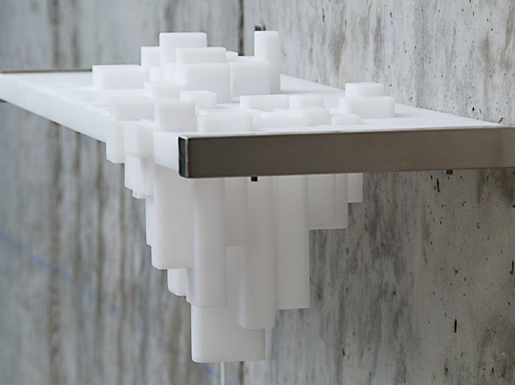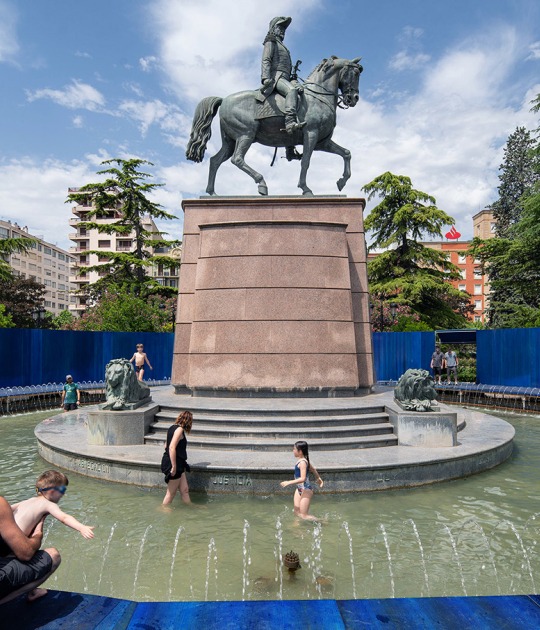Esther Pizarro, Madrid 1967, presents in her exhibition DOMESTIC PROSTHESIS an investigation of the human trinomial of the urban, the prosthetic and the domestic. It is not about the contradiction or opposition of the classical public space (the city) versus the private space (house), but to make them coexist in a same prosthetic structured system, conscious of the definition of transition spaces, ambiguous unions, amputated or missing limbs, enhancing that plural experience, conjunctional and multiple that the contemporary man has. DOMESTIC PROSTHESIS aims to make an analysis of such deformities, generating a plastic response to the day-to-day elements which have been altered, not only by integration or symbiosis but also in the subtle symphony of the concepts, shapes and materials. The artifacts generated explore domestic archetypes from a house, home or collective living. The object as such is altered by sculptural prosthesis that replace the existing deformation and modifies its natural state, introducing the organic of the city, understood as a growing body that is deformed, compressed, amputated, folded and fractured on itself. The amputated or missing area acts as a new topography for the development of a created city whose urban morphology has been adapted to the three-dimensionality of the missing part.

Domestic Prothesis. Esther Pizarro. ® Raquel Ponce Gallery
Such prosthesis show the fragmentation, deformation and juxtaposition of our own society, the unfinished, the partial, the fragmented as means to create higher levels of integration, accumulation, reiteration, differentiation and disconnection as stages of the existing situation.
Venue.- Galería Raquel Ponce. C/Alameda, 5. 28014 Madrid.
Dates.- 01/March - 03/April/2012.



























